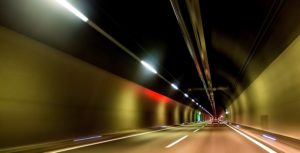An Extension to the European Particulate Dust Directive: Is A Printer Speed Limit on the Horizon?
April 1, 2019
Across the EU, roads have far lower particulate dust limits than workplaces. This will soon be changed. The European Commission Directorate for Transport and Digital Infrastructure is planning on extending the particulate dust directive to include office buildings. This article explains why special attention needs to be given to printing.

The upper limit for the daily average for particulate dust on roads in the EU is 50 micrograms per cubic meter of air. At workplaces on the other hand, it ranges from 60 up to 950 micrograms per cubic meter of air – depending on the industry the business is in. Experts from various fields, including the European Environment Agency (EEA), the European Network for Workplace Health Promotion as well as many healthcare professionals have agreed for many years that this is a situation that cannot continue. Now the European Commission Directorate for Transport and Digital Infrastructure is also getting on board and planning an extension of the Particulate Dust Directive. It is planned that the values which exist for outdoor areas, will also apply to indoor workspaces in the future. This could come into force as early as January 1, 2020 and would have a major impact on printers and copiers used at workplaces throughout the European Union.
Printers have long been a thorn in the side of many experts
Healthcare experts have been warning for many years now that particulate pollution from printers, especially laser printers, and copiers is enormously high. For some, printers are an even greater threat than smoking.
Recommendations, for example from the European Network for Workplace Health Promotion, to install printers in well-ventilated and separate rooms, away from desks are no longer enough for the European Commission Directorate for Transport and Digital Infrastructure. The particulate dust pollution should no longer exceed the upper limit of 50 micrograms in any working space.
What does the extension to the Particulate Dust Directive include?
It is planned is to create what are known as environmental zones – previously known from public streets in city centers, for workplace locations, including offices. Within these workplace environmental zones, devices that produce a particularly large amount of particulate dust will no longer be permitted. This includes in particular older laser printers and copiers.
Printer manufacturers now have to react quickly. From 2022 on, it is expected that only printers which do not exceed the particulate dust limit value per printed page will be allowed on the market.
Printers that are considered environmentally friendly, are to be issued with separate environmental labeling as early as 2020. Manufacturers will equip these devices with particulate dust filters and particulate monitoring equipment. If the particulate dust levels are too high, these devices will then automatically reduce the printing speed until the value has fallen back to 50 micrograms.
What businesses face if they exceed limits
Organizations are facing significant challenges with the new particulate dust directive. Should they exceed the designated limit, severe penalties will be issued by local environmental agencies.
In addition, from 2020 all existing printers in companies will have to be retrofitted with particulate dust filters and equipped with appropriate monitoring equipment. Despite all these measures, companies must be prepared in the future to distribute their print volume evenly over the course of the day. At peak times, it can be expected that printers will only print at slower speeds and that printouts will no longer be available as quickly as usual.
ThinPrint offers clean solutions for circumventing the speed limit
ThinPrint has always taken environmental protection seriously. And today, the ThinPrint Hub and Personal Printing can already be used for environmentally-friendly printing. This means that only pages that are really needed are actually printed. The particulate dust pollution caused by forgotten print jobs will be drastically reduced. Print jobs can also be output on printers that are not used very often, especially useful if intensively-used printers can only issue documents at a significantly reduced rate.
In addition, we’re already working on our new GreenPrinting™ feature, with which you can significantly reduce the particulate dust pollution emitted by your printers – and regardless of your printer models and manufacturer. This will ensure that the particulate dust limit is not exceeded in the workplace and that printouts are available at their usual speed.




